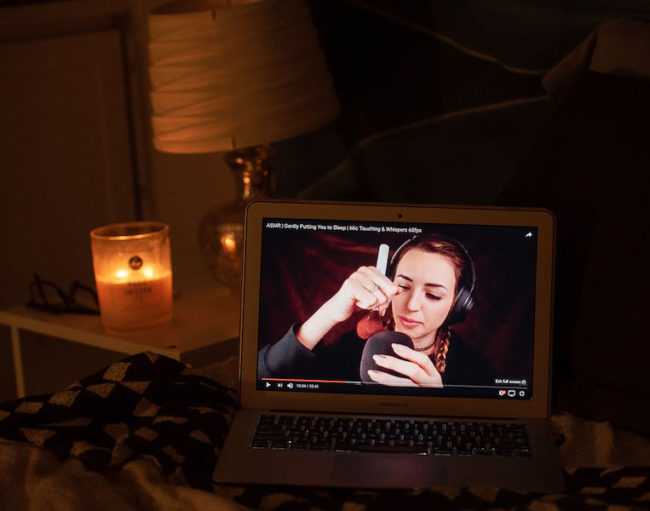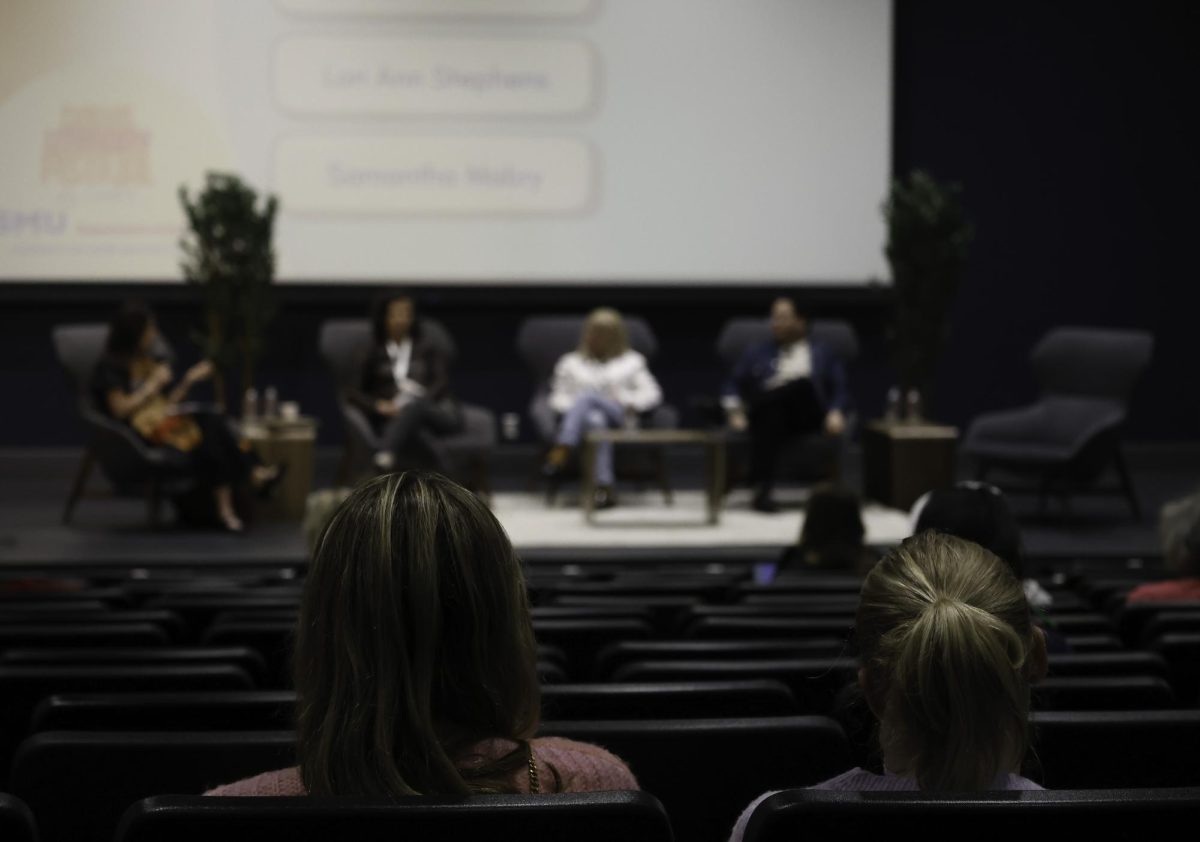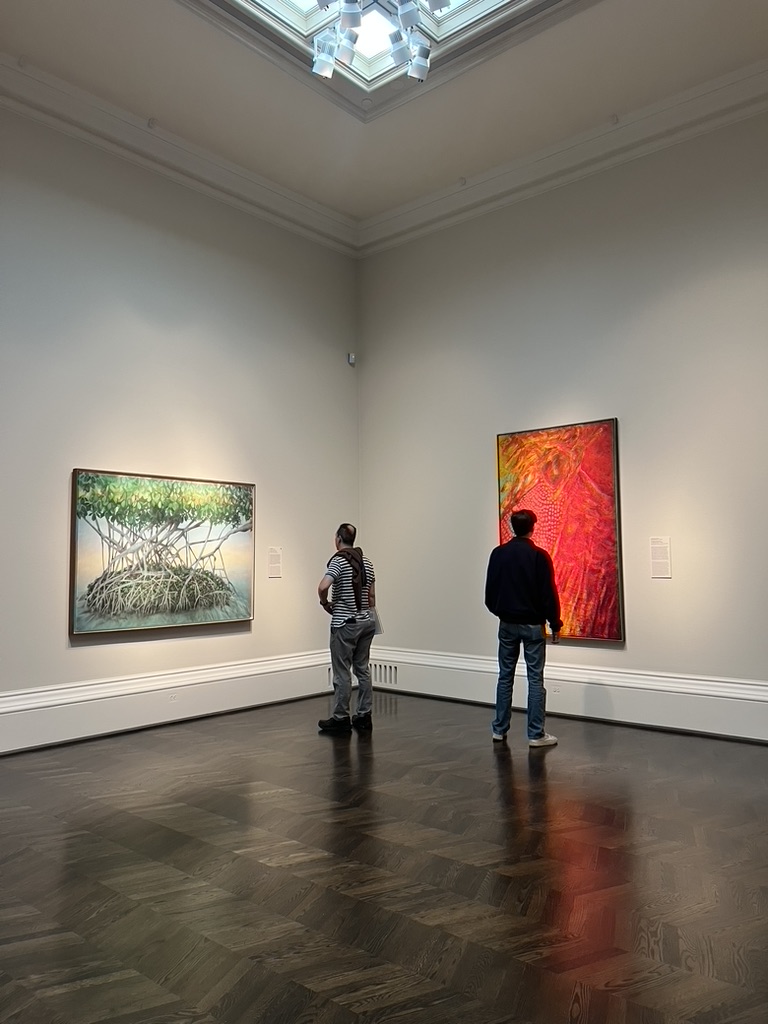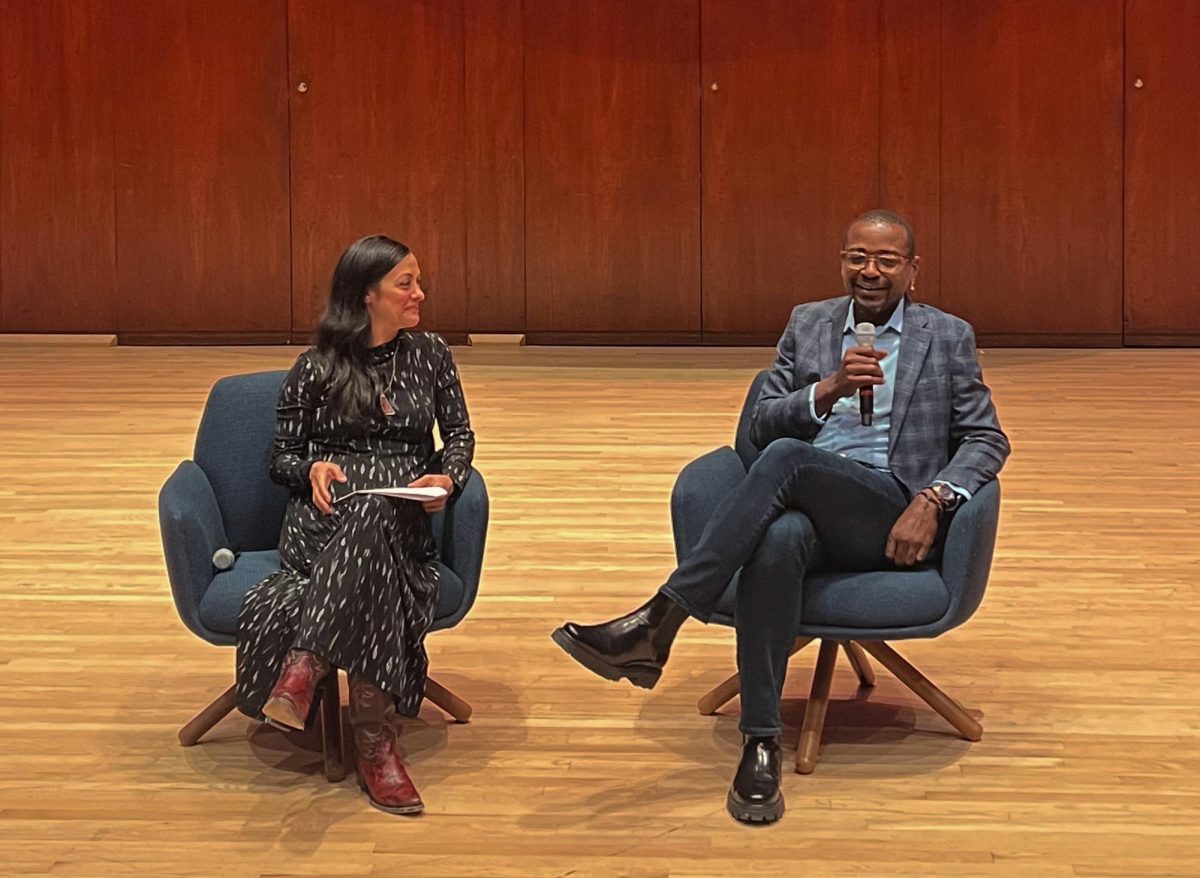Before going to bed, Macy Williams remembered to close her blinds so the light from the street wouldn’t bother her.
Her large, fluffy pillows are organized on her bed exactly how she likes them and her freshly-washed sheets feel extraordinarily soft against her skin.
She clutches her favorite blanket and rolls to the left again. She turned her lamp off a couple hours ago, but she can’t seem to slow her racing mind.
With a frustrated sigh, Williams pulls the covers back and reaches for her laptop. While she waits for Youtube to load, she thinks about the soft, relaxing sounds that will soon play through her laptop’s speakers: whispering, tapping, microphone brushing.
She types ‘ASMR Sleep Videos’ into the search bar, scrolls to the second page, and clicks on a video. After finding a comfortable position in her bed, she closes her eyes and allows herself to focus on the sounds. She quickly drifts to sleep.
Autonomous sensory meridian response, or ASMR, is a relatively new trend that seemed to gain popularity overnight. If you are active on social media, ASMR videos have probably appeared in your recommended tab or on your discovery page.
Thousands of these videos have gone viral multiple times on Youtube, often landing them on the popular page. Companies have also adopted ASMR as an advertising strategy.
For example, Zoe Kravitz incorporated two ASMR ‘triggers’, whispering and tapping, into the Michelob Ultra 2019 Superbowl commercial.
Although many people are familiar with the term ‘ASMR’, most have no idea what it means. ASMR occurs when a viewer experiences a deeply relaxing, tingling feeling in response to a ‘trigger’.
Viewers who do not experience this response often poke fun at ASMR by labeling videos as ‘creepy’ or ‘weird’. This lead to the controversy that is often associated with the term ‘ASMR’.
The reason it ‘works’ for some viewers, but not for others, still remains a mystery to experts.
“As far as I can tell, we’re still at the level of analyzing correlations and making speculations,” Adam Norris, a biological sciences professor at SMU, said. “But it is an interesting phenomenon!!”
Jennifer Allen coined the term ‘ASMR’ in 2010. She wanted to start a conversation about the deep, relaxing sensations that she sometimes experienced because she was unable to find research on them.
The group rose in popularity as other Facebook users who shared similar experiences joined the discussion.
Those who reacted to ASMR, also known as ‘ASMR sensitive’, began to form a niche community. They soon found that ASMR could be used to combat stress, anxiety and sleep, and they wanted to share this experience with a larger audience.
This led ASMR to appear on other social media platforms, such as Youtube a couple years later. The first ASMR video to go viral was posted in 2015, and the community continues to gain popularity.
ASMR video creators, called ‘ASMrists’, also star in the videos that they post on their Youtube channels. Videos typically last anywhere from 20 minutes to five hours.
ASMrtists use various ‘triggers’, including crinkling, whispering, and personal attention, to elicit a tingly and deeply relaxing response within their viewers.
However, ASMR triggers vary from person to person. Some will experience ‘tingles’ from listening to the sound of fingernails tapping while others find whispering the most euphoric.
“You have to find your own triggers,” Williams said. “It’s funny at first, but it can relax you if you can get past the weirdness of it!”
Gillian Yeager, a senior at Southern Methodist University, watches ASMR videos at night to help relieve stress and ease her mind before bed.
“I usually listen to videos where people whisper and pretend they are talking to you in certain situations. For example, they pretend that you’re at the spa, getting your nails done, or getting a haircut,” Yeager said. “I usually get really tired and fall asleep when I’m listening to the ones where people whisper.”
ASMrtists, especially those who focus on roleplay triggers, use their videos as a creative outlet. They often incorporate props and elaborate storylines to engage their audiences. If the video is a hit within the community, likes and positive comments flood the page.
Many ASMRtists often rely on their channels as their main source of income. It is very common for multiple ASMR channels to go viral.
In addition, many ASMrtists are sponsored by large brands, including Kindle and Honey, which establish them as a social media influencers as well. Their personal Instagram and Twitter accounts begin to rise in followers as viewers seek to keep up with their everyday lives.
However, a large group in society holds very negative views on ASMR. Commonly, they have not experienced calming effects that ASMR videos have been touted to provide. Others have a twisted perception that ASMR is some kind of sexual fetish.
“I have only watched one ASMR video on YouTube,” Zachary Kosub, a senior at Southern Methodist University, said. “I remember being uncomfortable and viewing it in a negative way. But it was with a friend and we were watching it with the intention of making fun of it.”
Recently, comedy Youtube channels began to put their own spin on traditional ASMR. They engage larger audiences by creating parodies.
However, this community does not regard this type of ASMR as malicious against traditional ASMR: rather, it is used as a form of light entertainment.
Camron Stewart, a junior at Southern Methodist University, prefers this type of ASMR videos, and she watches them when they come up on her recommended page on Youtube.
“The “calming” aspect of ASMR is just weird to me and I don’t understand it,” said Camron Stewart. “The majority of the ones that I have watched are the more funnier ones on Youtube like Jenna Marbles’ video. I find the funny ones more relaxing than the ‘serious’ ones if I’m honest.”
The media has picked up on ASMR as well. Advertising campaigns, including the Michelob Super Bowl commercial with Zoe Kravitz, features triggers such as gentle whispering and hand movements.
W Magazine features a series on Youtube where celebrities “explore ASMR”. Cardi B’s ASMR video went viral 32 million times.
What started as a single video on Williams’s recommended page turned into a culture-wide phenomenon.
She, along with the rest of the ASMR community, continues to explore new ASMR triggers. ASMR videos remain an essential part of her night routine.
“I really like eating videos now,” Williams said. “I found a lot of Japanese Youtubers who eat Asian food. It makes me feel tingly and relaxed.”















